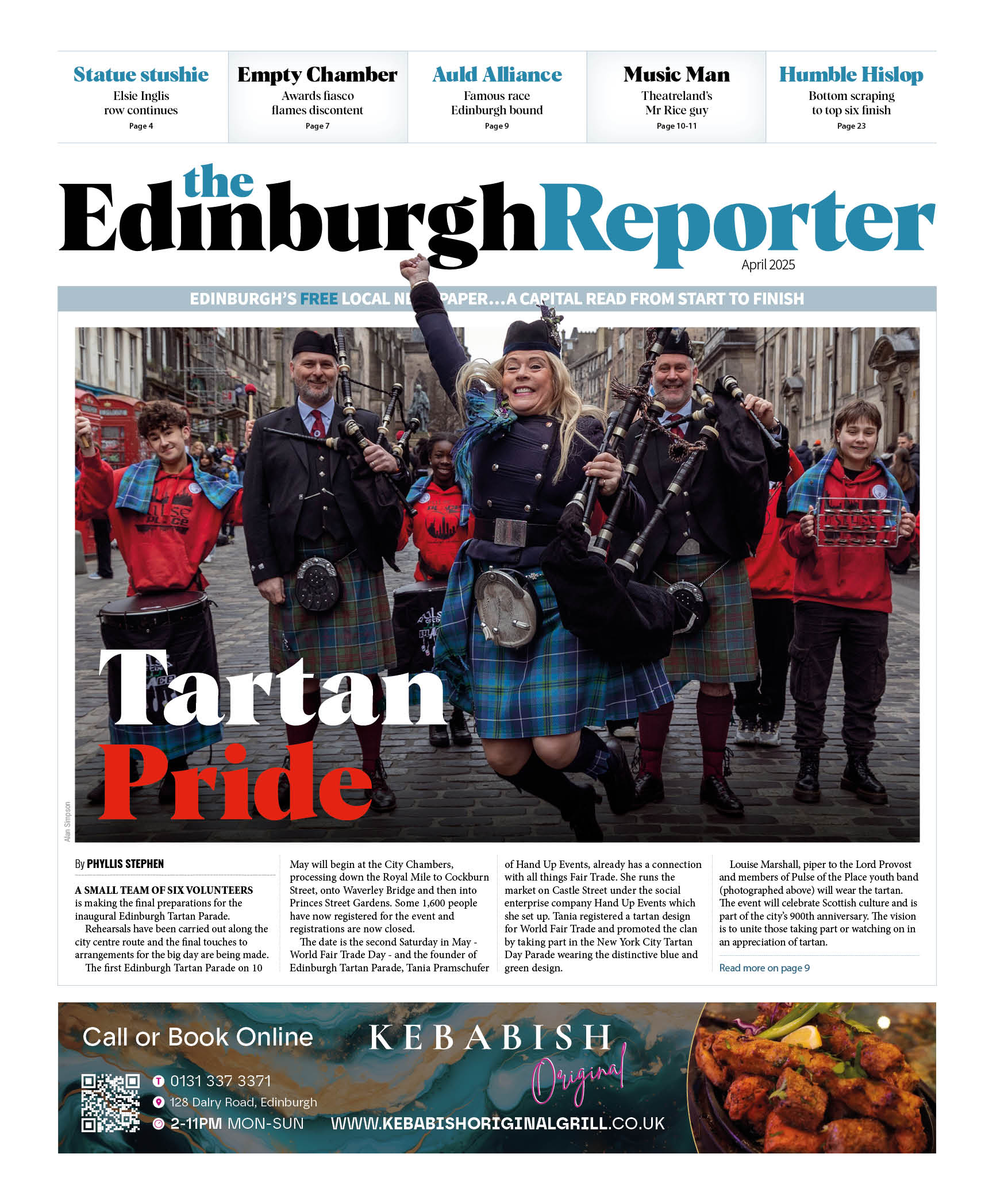Top crime writer Doug Johnstone says he can’t walk around Edinburgh without seeing fictional murder scenes.
The acclaimed author, 53, has set many of his grisliest plots in the city where he has lived for more than 30 years.
Johnstone, who has published 17 thrillers, said writing has changed the way he sees Edinburgh as even its beauty spots have become potential crime scenes.
He said: “You definitely notice it. Every time I go anywhere in Edinburgh that I’ve used in a book, I’m now thinking ‘that’s where that body was found’, ‘that’s where those criminals were staying’ or ‘that’s where that house was broken into’.
“You’re putting your own fictional map on top of the real map so you’re walking around endlessly being reminded of things that never really happened because you made them up, but they’re left in your mind.
“They feel like a part of your history now which is quite a strange sensation.”
He added that he’s even killed romance by insisting nowhere in the city is off limits for a gruesome fictional event.
“I have a running joke with my wife, whenever we go somewhere that’s remote and out of the way in the city I’m always spoiling it by saying ‘this would be a good place to hide a body’.”
Johnstone avoided writing about Edinburgh initially, setting his first novel, Tombstoning, in Arbroath where he grew up.
It was only in his fourth thriller, Hit & Run – which takes place in and around Holyrood Park – that the city became central to one of his novels.
Since then, plots have focused on locations from South Queensferry to Silverknowes and Calton Hill to Craigmillar as well as Portobello, where he lives.
One book, Breakers, was even inspired by a break in at his own home, while the Skelf series for which he is arguably best known has taken the family of funeral directors and private investigators all over the capital from their base in Bruntsfield.
Johnstone, who has a sixth Skelf book out later this year, said: “When I first started writing I shied away from Edinburgh. I think I subconsciously avoided it because a whole bunch of people, like Sandy McCall Smith, Irvine Welsh and Ian Rankin, were already writing brilliantly about Edinburgh and I wondered if I had anything to add.
“But everyone’s experience of a city is entirely different so my Edinburgh is different from Irvine Welsh’s Edinburgh, and certainly Sandy McCall Smith’s.
“Hit & Run was the first one I set entirely in Edinburgh, based around the south side and Arthur’s Seat. I’ve written one mostly in Portobello and others in areas that are usually not written about.
“It’s endlessly fascinating writing about a city like Edinburgh because everyone lives quite close together. It’s only a ten minute drive from Niddry to Morningside and the differences in the kinds of lives that people live in these areas.
“You’ve always got your writer’s antenna on. You’re looking for interesting characters, bits of conversation and settings that might be quite dramatic or useful.
“The Skelf books are like love letters to Edinburgh because as funeral directors they can go to all parts of the city that tourists never see and the general public may not be aware of.
“It gives me an excuse to write expansively about Edinburgh and the parts that I know well and that locals know well but perhaps nobody else does.”
He added: “I went to Cramond Island with my wife and kids one Sunday, as you do, just to get an ice cream and go for a walk but the whole time I was thinking ‘this would be a great dramatic backdrop’. So the most recent Skelfs book starts with a funeral on the island and they misread the timetables and lose a body in the water on the way back.
“There are still parts of Edinburgh I don’t know as well as I could and so I like driving or walking around places that I haven’t been before to see what the streets and houses are like, the shops, and the people. You’re always rooting around for these things. Edinburgh is an endless source of inspiration.”
Johnstone’s latest novel, The Collapsing Wave, has been longlisted for this year’s McIlvanney prize for Scotland’s crime book of the year, to be awarded on the opening night of the Bloody Scotland international crime writing festival in Stirling in September.
The second part in a science fiction trilogy, The Collapsing Wave follows on from The Space Between Us, the bestseller Johnstone describes as “ET meets Thelma and Louise”.
The trilogy starts with a meteor streaking over Edinburgh and an octopus-like creature washing up on the shore, and continues with a road trip with the alien from East Lothian to a US military base in Ullapool, where much of The Collapsing Wave is set.
Johnstone, who has been shortlisted three times previously for the prestigious award, said: “It’s amazing to be on the list for the McIlvanney Prize, which is the most important prize for crime fiction in Scotland.
“The Collapsing Wave is a science fiction novel but it’s also a crime novel and a thriller, but the longlist has all different kinds of books.
“As a writer you’re always trying to challenge yourself, and it’s just so rewarding to know that readers are going with you on that journey.”













